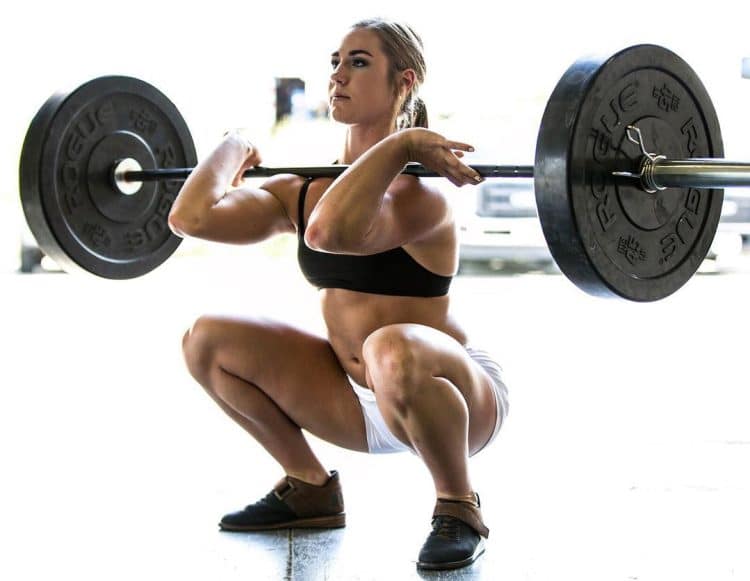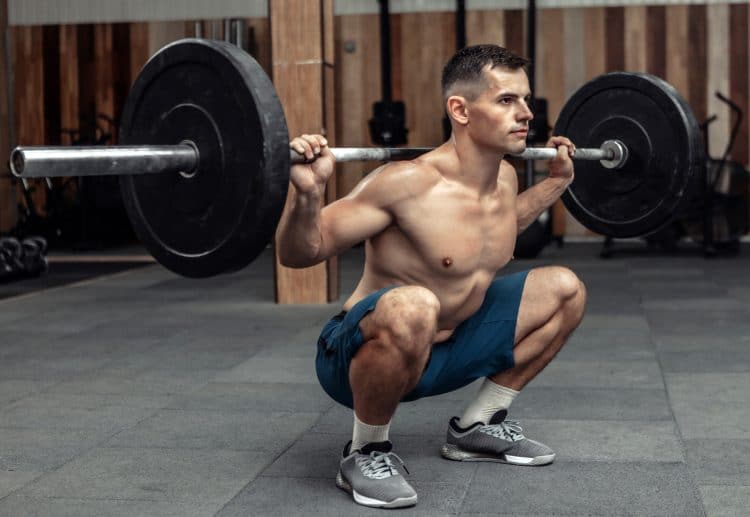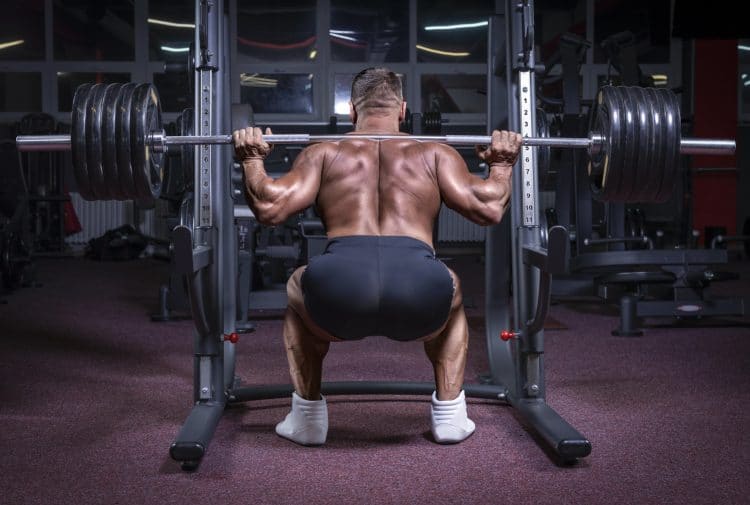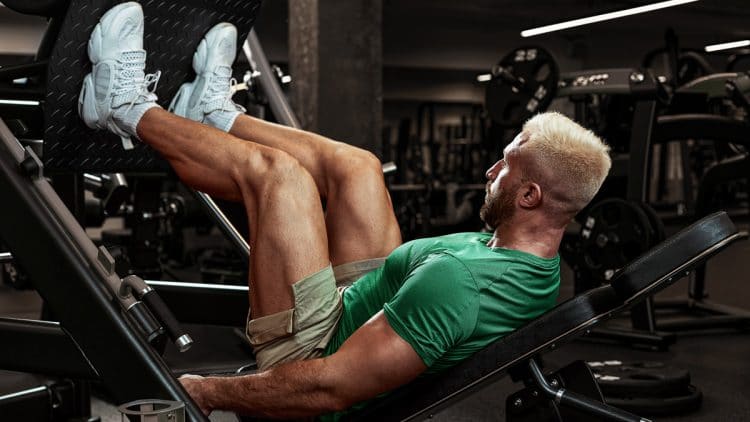The squat is heralded as the granddaddy of leg exercises. Whether your goal is to get your legs stronger, bigger, or both, nothing really beats the squat.
Sure, machines have their place but the leg press, leg extension, and even hack squat pale in comparison to how effective the squat is for stimulating lower body growth.
Let’s break down the squat, its benefits, mechanics, and even how to use them in your next workout.
Why squat?
It’s pretty much doctrine that the squat is a requisite in any muscle-building routine. Although many will tout its benefits and shout from the rooftop that it’s a must-have, few actually practice what they preach. Furthermore, those who wear their heart on their sleeves and attempt literal feats of strength while squatting butcher this heralded exercise.
Such botched form and function might result in sore knees, an achy back, and bruised ego. Afterward, warning signs are sent to others pleading not to squat. “They’re bad for your knees and back” or “You’re too tall to squat correctly” are arguably the most common excuses not to squat.
Level Up Your Fitness: Join our 💪 strong community in Fitness Volt Newsletter. Get daily inspiration, expert-backed workouts, nutrition tips, the latest in strength sports, and the support you need to reach your goals. Subscribe for free!
Don’t listen to all that noise.
If you still want more from the squat and want to build muscle, you need to try to get all you can from them. You might need to shore up some weak areas, perfect your form, and possibly take on a different approach.
All the leg presses and leg extensions can’t compare to some well-executed squats when you want to pack on muscle mass and strength.
Squat for strength or muscle?
Here, we’re going to delve into how to squat for muscle growth. Sure, you’ll get stronger as a nice side effect, but packing on new muscle tissue will be the focus.
Training variables such as rest periods, loads, and rep ranges will change depending on your ultimate goal. In other words, it has more to do with how you do an exercise than it does which exercise you do.
A strength-focused squat program would include lower rep ranges, heavier weight, and longer rest periods. Strength training is more performance-based with the aim of lifting a determined amount of weight.
Muscle building or hypertrophy is more about recruiting more muscle fibers and fatiguing those fibers as much as possible under moderate loads.
Hypertrophy training has you using lighter loads, shorter rest periods, and higher rep ranges than a strength-building-focused training program. The goal is to recruit, fatigue, and repeat.
Related: Sets vs. Reps: Everything You Need to Know
How to squat better for more muscle
It’s obvious why so many lifters opt to use the squat to get stronger. It’s easier to perform the squat with lower reps and longer rest periods.
Level Up Your Fitness: Join our 💪 strong community in Fitness Volt Newsletter. Get daily inspiration, expert-backed workouts, nutrition tips, the latest in strength sports, and the support you need to reach your goals. Subscribe for free!
Conversely, using the squat for hypertrophy would require a substantial amount of muscular as well as cardiovascular endurance in order to elicit enough benefit.
Let’s now break down the squat and see how we can squat better for more muscle growth.
1. Create a foundation
- With the loaded bar positioned on your mid trap, start by placing your feet wider than shoulder-width apart and keep your knees slightly bent.
- Tighten your abdominals by bracing as if you’re about to get punched in the gut. Your quads, glutes, and lower back should also be activated.
- Grasp the barbell with both hands with a thumb around the bar grip. This will be your starting position for each and every rep until the entire set is complete and the bar racked.
2. Get your mechanics right
- Begin the motion by bending at your knees and bringing your hips back and down. Keep your abs braced and knees in line with your feet.
- Avoid caving in your knees as you descend.
- As you go down, keep control of the bar by lowering slowly and as if you’re sitting on a small stool behind you. This sitting motion will ensure that your feet stay planted flat on the floor.
- When you reach a comfortable depth (at least parallel to the floor), reverse the motion and stay braced. Breathe in on the way down and out on the way up.

3. Execute with purpose
- Throughout the set and with every rep, keep a braced core and imagine pulling down with your hamstrings as you descend.
- As you come up, actively contract your quads and lead the way up with your upper back. Avoid bending over too much and keep your spine in a straight line.
- It’s a lot to think about, but after some time and purposeful practice, it will become second nature.
4. Progress slowly
- Since the goal isn’t to get as strong as possible, make a small progression in weight with each workout.
- Remember, the main goal is to recruit muscle fibers and annihilate them. Yes, weight is important, but make only incremental jumps such as 10 pounds at a time. Also, do this only when you’ve perfected the previous weight load several times. For example, if your rep range is 8 to 12 and you’ve repped out with a certain weight for 12 reps two workouts in a row then add a five-pound plate to each side for the next workout.
5. Always be perfecting
- Never stop trying to perfect your form. Go through the steps in your head, and take your time setting up your stance.
- Execute each set slowly and with purpose. The moment you let up will be the day you pull a muscle, strain a joint, or worse. Always be the student.
A note about squat depth
There are plenty of opinions on squat depth, but here we’ll settle on performing at a depth that is comfortable for you. However, that doesn’t mean you should stop there. If you have a relatively shallow squat depth, then there may be some issues that need addressing.
For example, you may have tight Achilles tendons causing your heels to raise up as you lower your body. Or tight glutes preventing your hips from opening up for greater depth.
If any of these issues are limiting your depth, then be sure to adopt a comprehensive stretching plan several times per week.
Remember — You may not have the greatest squat depth, but you can improve upon it.
How to program squats for muscle gain
There are many ways to program the squat to reap the greatest muscle-building rewards. For one, you don’t have to perform the squat first thing in your lower body training plan. Feel free to place it after one or several other leg exercises.
You could pre-exhaust your quads by performing other lower body exercises before hitting the squat. After pre-exhausting your quads, you don’t need to use the same weights you would have used had you performed the squat as the first exercise of your leg training routine. It allows similar muscle fiber recruitment and activation, minus the heavy weights.
Your new leg training routine could look something like this —
If you’re the type who needs several sets to warm up your knees, hips, and ankles, try starting your lower body workouts with hamstrings. This will force blood in the knee area and prime your legs for heavier compound exercises later in the session.
Different ways to squat
The barbell back squat is the staple of every lifter, but there are plenty of other free weight alternatives to try out, such as —
- Smith machine squat
- Barbell front squat
- Goblet squat
- Bulgarian split squat
Feel free to use any of the above exercises if the back squat isn’t the right fit.
Sets, reps, and rest
To stay in a hypertrophy rep range and get the best bang for your buck doing the squat, stick to performing right to 12 reps. Additionally, you could go as high as 20 reps at times to shock your muscles. Stick to three or four working sets after you’ve completed a thorough warm-up routine.
For rest periods, stay within the 60 to 90-second range. Shorter rest periods are ideal for hypertrophy as opposed to pure strength training which requires longer rest periods. A study in Experimental Physiology measured hormone and protein synthesis levels and found the 60 to 90-second range to be optimal. [1]
Also read:
In closing
The squat isn’t just for gaining strength. It can easily be adapted to become a serious mass builder — all it takes is a different perspective, careful attention to detail, and purposeful execution and practice.
Establish a solid foundation, execute proper mechanics, stay present with every single rep, add weight slowly and only when you’re absolutely ready, and never stop trying to perfect your form. You’ll have the squat mastered in no time and the size to show for it.
References
- McKendry, J., Pérez-López, A., McLeod, M., Luo, D., Dent, J.R., Smeuninx, B., Yu, J., Taylor, A.E., Philp, A. and Breen, L. (2016), Short inter-set rest blunts resistance exercise-induced increases in myofibrillar protein synthesis and intracellular signalling in young males. Exp Physiol, 101: 866-882. https://doi.org/10.1113/EP085647











